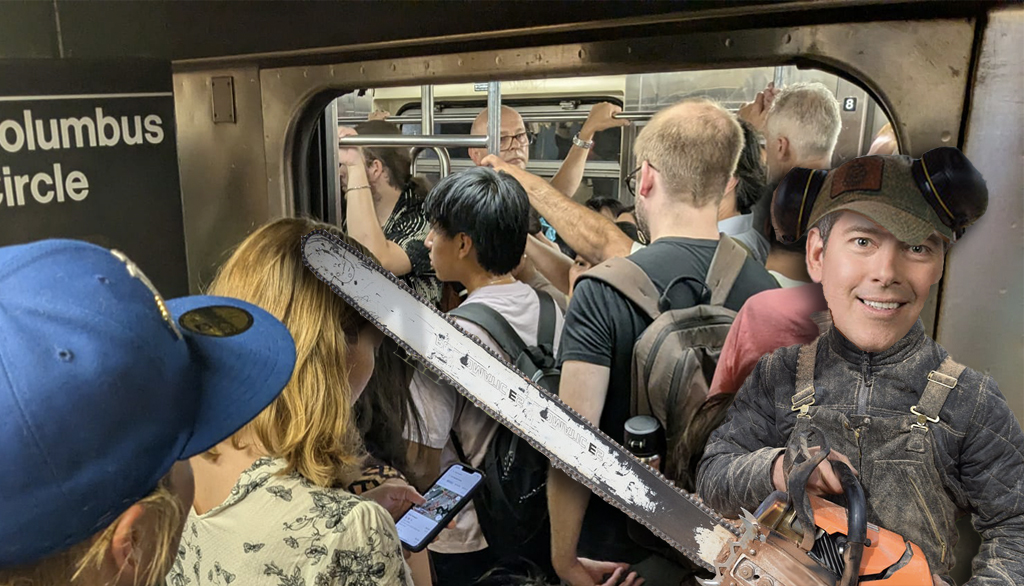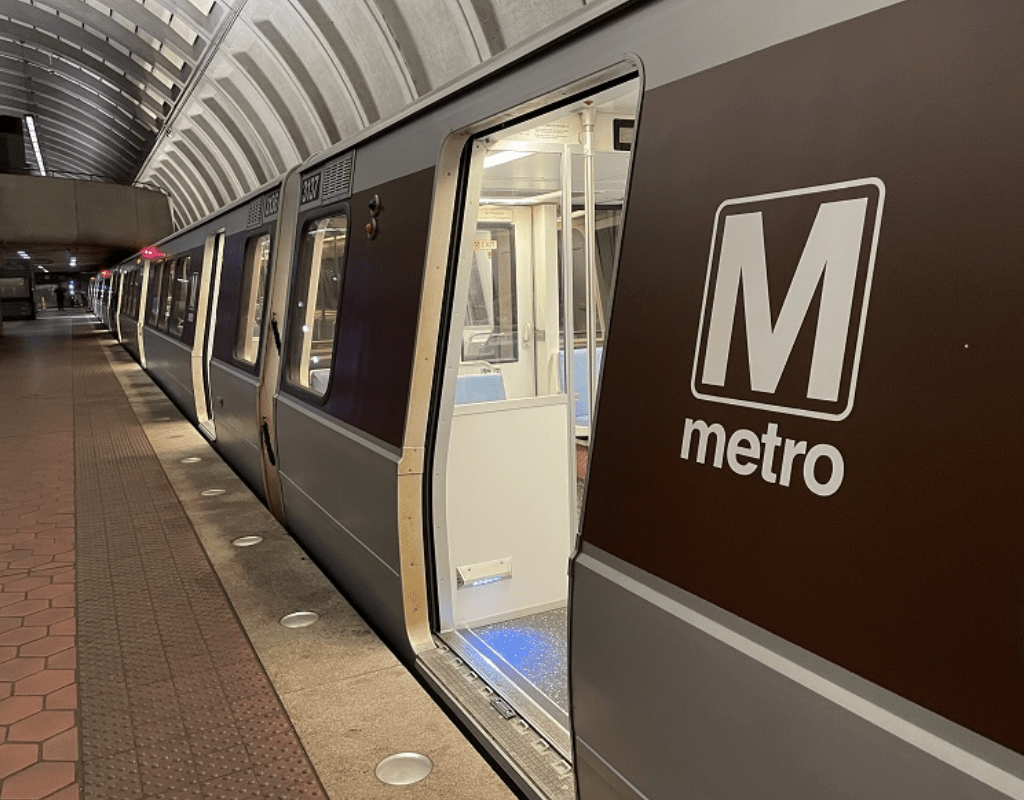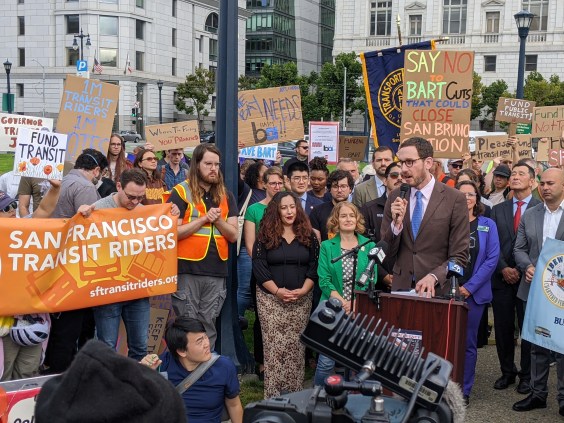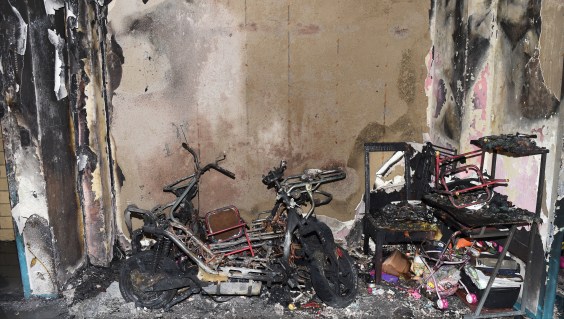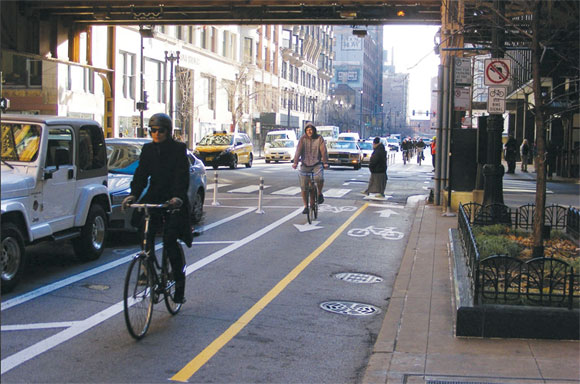
Editor's note: As transportation commissioner for DC and later Chicago, Gabe Klein was pivotal in the development of a new model for big-city DOTs. Along with Janette Sadik-Khan in New York, Klein (who sits on the board of OpenPlans, the organization that publishes Streetsblog) pioneered an approach that prioritized people instead of cars and emphasized the importance of quick action to gain the public's confidence.
In his new book, Start-Up City, available from Island Press, Klein outlines his strategy for making city agencies more nimble and responsive to modern policy challenges, especially in the realm of streets and transportation. It's a guide to, in his words, "getting sh*t done." It's also a great read with lots of behind-the-scenes glimpses of what it takes to change streets in today's cities. Below is one of our favorite stories from the book, about the origin of a key piece of downtown Chicago bike infrastructure. For more about Klein and Start-Up City, check out the Streetfilms interview.
During my first eight months, our outreach for the Chicago Streets for Cycling Plan 2020 and the resulting feedback made it clear to us that Chicagoans were eager to have safer bike facilities near their homes, but also desired citywide connectivity, particularly to and through the Loop, if they were going to consider commuting by bike. Like most of our key projects, we had assembled a big tent of supporters to make sure that we had maximum reach, input, and backing when we went public with the 2020 bike plan. The plan as process and output proved a critical first step because of the potential for blowback from auto-oriented skeptics, many of whom still viewed bikes as nothing more than a recreational activity for kids or a form of high-intensity fitness training.
In the plan, we could not and did not ignore the complexities of downtown traffic, which previous plans had skirted due to its heavy congestion and high stakes. The Dearborn two-way bike lane represented the centerpiece of the proposal for the Chicago Loop and was, in many ways, the route without which the entire thing would fall apart...
Internally, we built support for the project by challenging our engineers to strive for greatness and to use the latest technology, including sensors to detect cars in the turn lanes and cyclists approaching the lights to trigger a light change. Our Bureau of Electricity, our line striping unit, and CDOT inspectors were employed to implement the project as opposed to contractors. So, at every level of the agency, CDOT staff had a role in this high-profile, high-stakes project, and everyone was aligned to see it succeed. We also had total control and were able to use CDOT internal budget line items for the bootstrap project. We had no dedicated funding stream for bike lanes for the first two years -- just a mandate -- so creativity was key.
At the eleventh hour, we learned that the Illinois DOT, which had jurisdiction over a few of the east-west streets that crossed the Dearborn bike lane, was going to flex its political muscle. A year before, we had planned on running a protected bike lane from the west side of Chicago all the way through the Loop, and the state traffic engineers had balked because "they had jurisdiction" and "this was unproven." This was really code for "we are not going to let you do it... just because."
These sorts of jurisdictional battles are a common thread in cities where historical ownership of certain streets, particularly larger arterials, by the state can result in shockingly simple ideas being portrayed as radical. What I didn’t count on was Illinois DOT banning us from even crossing one of their streets or adding one bicycle signal. However, there were bigger political and personality issues and tensions at hand between the city and state. The governor's office didn’t want me or the city dictating policy to them, or making the state look "old school in the face of change." The Illinois DOT, because of many overtures at the engineers' level, was actually on board with our bike and safety projects at this point and supported our overall approach.
We sent a note to our friends at the state, knowing that they were ruffling our feathers at the behest of the governor’s office for political reasons, rather than disagreeing with the decision based on any sound engineering or planning basis. We notified them respectfully that we were charging ahead with the project, the reasons why we were justified, and that they were invited to the press event to unveil the project if they so chose. We came from a strong position, and did not back down. Basically, we were saying, "Go ahead and sue us."
The state, as I predicted, stayed quiet as the facility went in. As the bike lane became real, and people started riding in it before it was even open, we heard no complaints, save one hotel that needed some adjustments made to a loading zone.
We had a press conference, and more than two hundred Chicagoans showed up to celebrate the new facility. It was a landmark project for Chicago, and it made a statement that we were serious about safety, as well as about cycling as a form of basic urban transportation.
From Start-Up City by Gabe Klein. Copyright © 2015 Gabe Klein. Reproduced by permission of Island Press, Washington, D.C.
